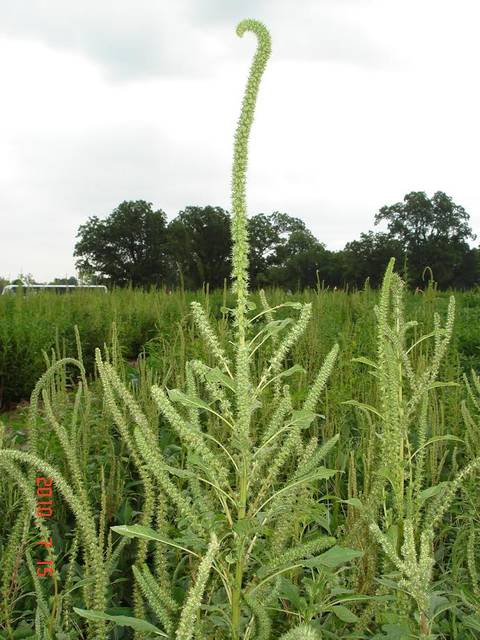
Last year, the potentially devastating weed Palmer amaranth was discovered for the first time in Preble County. After the initial infestation was identified, two separate sources were discovered last summer, and more have already been found this year. This should be of great concern to farmers in Preble County for several reasons.
Palmer amaranth is a member of the pigweed family. It has become rampant in certain areas due to fast growth of up to 3” per day, emergence spring through fall, resistance to multiple herbicides, and the production of up to a million seeds per plant. Palmer has the potential to double herbicide application costs for farmers, and the weed likely still wouldn’t be controlled. It can even lead to reduced property values.
Livestock feed products are the main source bringing Palmer seed to Ohio, and therefore livestock producers need to be very careful about where they are sourcing feed. Be especially cautious about bringing in hay or other feeds from southern or western states. Premixed feeds can be an issue, especially those containing cotton seed products. Crop producers need to be cautious about applying manure to fields and purchasing equipment with a history in locations where Palmer is present. When purchasing feed or equipment, find out where it is from and its potential for contamination with Palmer seed.
Preble Soil and Water Conservation District has been working with farmers to identify Palmer and determine steps to move forward once it is discovered. The SWCD strongly urges any farmer who has applied manure to fields to scout those fields now to determine if Palmer is present. Some Palmer has already reached 2 feet tall and is beginning to produce seedheads. If not removed from fields soon, seeds will begin dropping. Scouting fields will require being out in them, as Palmer is hard to identify from a distance. It blends right in with soybean fields until you are near the plant. If you are using a herbicide that is effective at killing Palmer, make sure to check field and waterway edges where application rates were likely lower.
Palmer amaranth resources are available at the Preble Soil and Water Conservation District office at 1651 N. Barron St., Eaton, and on the website at http://www.prebleswcd.org/palmer-amaranth.html. Anyone concerned that they may have a palmer infestation is encouraged to contact the SWCD office, an agronomist, or Mark Loux at OSU immediately.


